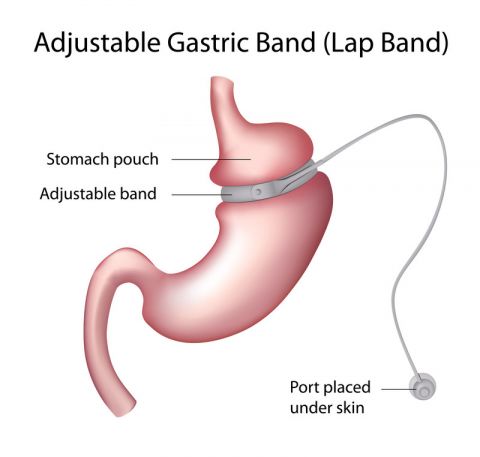GASTRIC BAND
More than 10.000 gastric bands have been placed in France each year with high experience.
Easy to perform, the procedure takes 30 to 50 minutes and requires a 2 to 3 night hospitalization. Quick recovery time and minimum risk.
However, the gastric band has been in steady decline in France and in many other countries in Europe due to its lack of long time effectiveness and constraints: strict diet, multiple band adjustments, need for a stable life regimen, vomiting or challenges eating or drinking requiring emergency removal of the band. Its bad reputation is not totally justified and while its failure at a distance has been documented, we now know why: poor patient selection with patients often being to young, with little stability, unable to adapt to a regular and strict diet, or demonstrating psychological fragilities.
- No gastric mutilation, the gastric band can be removed in case of failure, a sleeve or a bypass can then be performed simultaneously or in a subsequent surgery.
- No vitamin deficiency and progressive weight loss.
- Complications can occur at a distance: slippage, erosion of the stomach, migration, overfills and dilation of the overlying esophagus in case of overly frequent and important fills, complications may cause difficulties when removing the band.
- Can be compromised, some types of foods are not tolerated and change of lifestyle can interfere with social life.
- Reflux of pre-existing gastric fluid upward may be exacerbated by gastroplasty and blockage in case of excessive tightening is unpleasant.
- Weight loss is less significant compared to sleeve or bypass surgery.
It must be noted that this procedure isn’t a ‘miracle’: the post-operative diet is very important, monitoring is required to detect complications mentioned above and adjustments are not always easy to do and require radiological check-ups.
LAP BAND REMOVAL: WHEN AND WHY?
1. Inadequate Weight Loss: If a patient loses less than 25% to 30% of their excess weight after LAP band placement, removal may be necessary. Sometimes, the band doesn’t deliver the desired results.
2. Band Erosion: When the band grows into the stomach. Band erosion is a severe complication that requires immediate removal. It can lead to port-site infection and other issues.
3. Band Infection: If antibiotics fail to heal an infection related to the LAP BAND, removal becomes essential.
4. Band Migration: Sometimes, the Lap Band can migrate, moving from its original position, occasionally forming a proximal obstruction (the band migrates into the stomach or lower into the small intestine, causing serious complications such as blockages, pain and needing urgent removal), or migrates upwards towards the esophagus (causing discomfort and occasionally vomiting).

